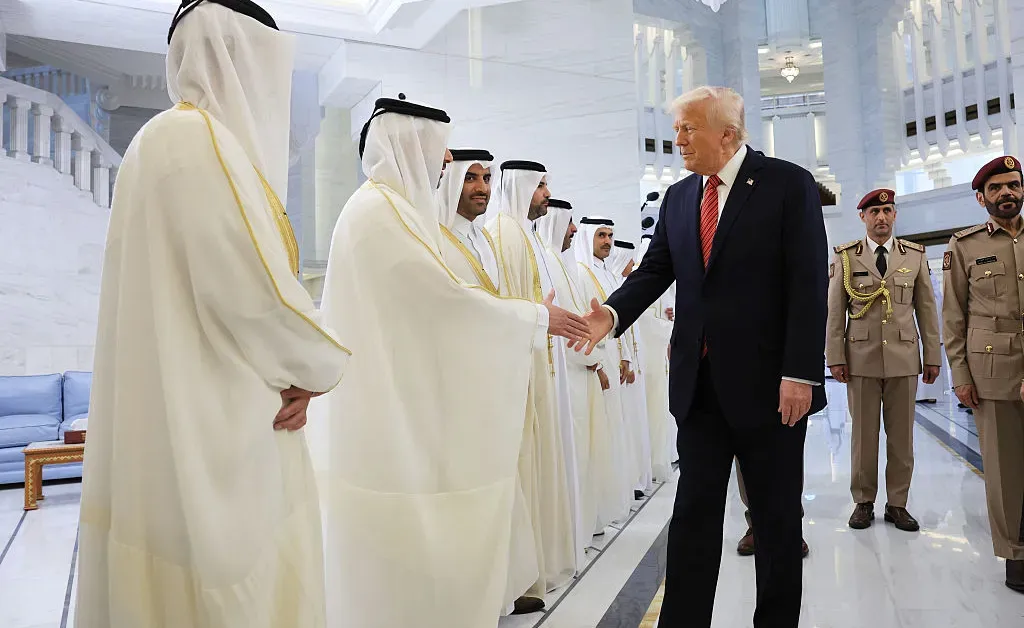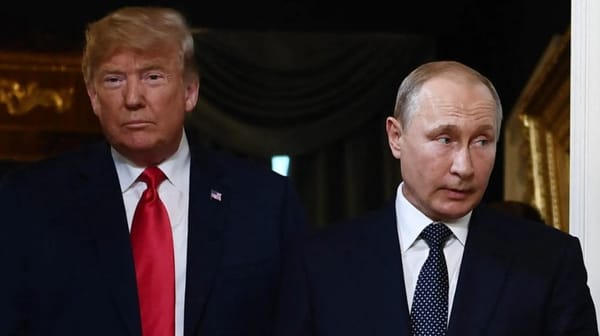Trump’s Gulf Tour Reshapes Middle East Diplomacy and U.S. Alliances

Executive Summary
Former U.S. President Donald Trump’s whirlwind tour of Saudi Arabia, Qatar, and the United Arab Emirates in May 2025 has redrawn the diplomatic map of the Middle East. The trip yielded unprecedented arms and business deals, signaled a decisive shift toward a new Sunni-led regional order, and underscored Israel’s growing isolation due to its Gaza policy. Trump’s approach, marked by transactional diplomacy and a focus on economic and security partnerships with Gulf monarchies, has recalibrated U.S. priorities in the region. This report examines the key moments, agreements, and implications of the tour, exploring how it is reshaping alliances, marginalizing traditional partners, and setting the stage for a new era in Middle Eastern geopolitics.
1. Context: A Region in Flux
1.1. The Pre-Tour Landscape
The Middle East in 2025 is a region marked by volatility and transformation. The Gaza war, the collapse of the Assad regime in Syria, ongoing tensions with Iran, and the weakening of Iranian-backed Shia militias have created a fluid environment. The U.S. under Trump’s renewed leadership has signaled a departure from the previous administration’s approach, prioritizing pragmatic engagement and economic opportunities over ideological commitments and traditional alliances[1][2].
1.2. The Rise of the Sunni Bloc
Sunni powers, led by Saudi Arabia, have gained unprecedented leverage. Iran’s “axis of resistance”-including Hezbollah, Hamas, and the Houthis-has been weakened by military setbacks and internal pressures, while the Gulf monarchies have consolidated their influence through wealth, diplomacy, and security cooperation[1:1][2:1]. This shift has set the stage for the emergence of a new regional order, with the U.S. as a willing partner.
2. The Tour: Key Stops and Agreements
2.1. Saudi Arabia: The Strategic Pivot
Trump’s tour began in Riyadh, where he was greeted with royal pageantry and a high-profile investment forum attended by global business leaders, including Elon Musk and Sam Altman[3][4]. The centerpiece was the signing of a $142 billion arms deal, the largest in U.S.-Saudi history, encompassing advanced fighter jets, missile defense systems, and AI-powered surveillance technology[4:1][5][6]. Additional agreements covered energy, technology, and space cooperation, including a partnership between the Saudi Space Agency and NASA.
Saudi Arabia committed to investing $600 billion in the U.S. economy, with American firms reciprocating through projects in Saudi infrastructure, aviation, and entertainment[6:1]. Notably, Trump encouraged Saudi Arabia to join the Abraham Accords, though the kingdom signaled it would move at its own pace, prioritizing its interests and the unresolved Gaza conflict[3:1][7].
A striking moment was Trump’s handshake with Syria’s new leader, Ahmed al-Sharaa-a figure Israel brands as an “al-Qaeda terrorist in a suit.” Trump’s willingness to engage with Sharaa, coupled with his announcement to lift longstanding U.S. sanctions on Syria, marked a dramatic policy shift and a rebuke to Israel’s preferences[8][9][2:2].
2.2. Qatar: Economic Powerhouse and Diplomatic Broker
In Doha, Trump was received with lavish hospitality and presided over a series of high-value agreements, including a $96 billion Boeing deal and a $243 billion package of commercial and defense contracts[3:2][4:2][6:2]. Qatar Airways’ order for 210 Boeing jets was hailed as the largest in the company’s history.
Trump’s engagement with Qatar, despite its ties to Hamas, underscored the country’s indispensability as a U.S. ally, given its vast natural gas reserves, financial clout, and the strategic Al Udeid Air Base-the largest U.S. military installation in the region[8:1][3:3]. Trump also appealed to Qatar to help mediate the Gaza hostage crisis, a move that drew criticism in Israel but reflected Washington’s pragmatic approach to regional problem-solving.
2.3. United Arab Emirates: Technology and AI Ambitions
The final leg in Abu Dhabi focused on technology and artificial intelligence. Trump attended the signing of a $1.4 trillion agreement to establish the largest AI data center outside the U.S., in partnership with Emirati firm G42[3:4][4:3][6:3]. Additional deals covered energy, aviation, and interfaith initiatives, with the UAE awarding Trump the Order of Zayed, its highest civilian honor.
Trump’s business ties in the Gulf were also on display, with the Trump Organization announcing new luxury property projects in Dubai and Doha, and a crypto venture backed by Emirati investment[10]. These personal and commercial interests further entwined the Trump brand with the region’s economic elite.
3. Diplomatic Realignment: Marginalizing Israel
3.1. Israel’s Growing Isolation
Perhaps the most consequential outcome of the tour was the visible sidelining of Israel and Prime Minister Benjamin Netanyahu. Historically, U.S. presidents have prioritized Israel in their Middle East policy. Trump’s decision to bypass Israel on this trip, his public rebukes of Netanyahu over Gaza, and his willingness to engage with Syria and Iran sent a clear message: Israel can no longer count on unconditional U.S. support[8:2][11][9:1][2:3].
Frustration in Washington over Netanyahu’s refusal to accept a Gaza ceasefire and his opposition to U.S. engagement with Iran has strained the relationship. Gulf leaders, empowered by Trump’s visit, have asserted their own pace on normalization with Israel, making clear that progress depends on resolving the Palestinian issue[7:1][9:2][2:4].
3.2. The Gaza Factor
The ongoing war in Gaza has left Israel bogged down militarily, divided domestically, and increasingly isolated internationally[12][13][14]. Humanitarian concerns, the absence of a viable postwar vision, and Netanyahu’s hardline policies have alienated key Arab partners and complicated relations with Egypt and Jordan[15]. Trump’s tour highlighted the region’s impatience with the stalemate and signaled a willingness to move forward without waiting for Israeli acquiescence.
4. The New Sunni-Led Order
4.1. Saudi Arabia’s Ascendancy
Crown Prince Mohammed bin Salman has emerged as the region’s preeminent power broker. The U.S.-Saudi partnership, cemented by massive arms and investment deals, has elevated Riyadh’s influence in both regional and international affairs[1:2][16]. Saudi Arabia now plays a leading role in mediating conflicts, hosting diplomacy on Ukraine and Iran, and shaping the future of the Middle East.
4.2. Gulf States as U.S. Partners of First Resort
Trump’s transactional diplomacy has made the Gulf monarchies America’s partners of first resort, bypassing traditional democratic allies in favor of wealthy, deal-making autocracies[10:1][17]. The Gulf states have leveraged their financial resources and strategic assets to secure U.S. security guarantees and advanced technology, while offering Washington access, influence, and investment.
4.3. Weakening of Iran’s Axis
The Sunni bloc’s consolidation has come at the expense of Iran and its Shia proxies, who have suffered military setbacks and loss of territory[1:3]. Trump’s engagement with Syria’s new leadership, his support for a ceasefire with Yemen’s Houthis, and the Gulf’s assertive diplomacy have further marginalized Tehran’s influence.
5. Key Agreements and Economic Impact
5.1. Arms and Defense
- $142 billion U.S.-Saudi arms deal: Includes advanced fighter jets, missile defense, and surveillance technology.
- $243 billion U.S.-Qatar commercial and defense deals: Major contracts for Boeing, Raytheon, and General Atomics.
- AI and technology agreements: $1.4 trillion AI data center in Abu Dhabi, Google-PIF AI hub in Saudi Arabia.
5.2. Business and Investment
- $600 billion Saudi investment in the U.S.
- $1.2 trillion U.S.-Qatar economic exchange
- $200 billion U.S.-UAE commercial deals
- Energy, infrastructure, and aviation projects on both sides, including U.S. investments in Saudi airports and parks.
5.3. Personal and Commercial Ties
Trump’s personal business interests in the Gulf, including real estate, golf, and crypto ventures, have deepened economic interdependence and blurred the lines between public diplomacy and private gain[10:2].
6. Policy Shifts and Regional Implications
6.1. Lifting Sanctions on Syria
Trump’s decision to lift U.S. sanctions on Syria’s transitional government, following a meeting with President Ahmed al-Sharaa, represents a dramatic policy reversal. The move, brokered by Saudi Arabia, aims to reintegrate Syria into the regional order and facilitate reconstruction, despite Israeli objections[8:3][3:5][9:3][2:5].
6.2. Nuclear and Energy Diplomacy
The U.S. is negotiating a civil nuclear investment package for Saudi Arabia, raising concerns in Israel about regional proliferation. Energy agreements with all three Gulf states underscore the centrality of oil, gas, and renewables in the new diplomatic framework.
6.3. U.S. Military Footprint
The tour reaffirmed the importance of U.S. bases in Saudi Arabia and Qatar, particularly Al Udeid, as anchors of American power projection in the region. Defense agreements will further integrate Gulf militaries with U.S. systems and doctrine[9:4][17:1].
7. Reactions and Critiques
7.1. Israeli Disquiet
Israeli officials and media have expressed alarm at their country’s marginalization and the apparent erosion of the “special relationship” with Washington[11:1][9:5][2:6]. Netanyahu’s perceived intransigence on Gaza and Iran is widely seen as a liability, and there are growing calls within Israel for a strategic reassessment.
7.2. Arab Responses
Gulf leaders have welcomed the shift, seeing it as validation of their growing clout and a chance to shape the region on their own terms. Egypt and Jordan, however, remain wary of being sidelined, especially as the Palestinian issue remains unresolved[15:1].
7.3. U.S. Domestic Debate
Trump’s focus on business deals and personal interests has drawn criticism from opposition politicians and ethics watchdogs. However, supporters argue that the approach delivers tangible benefits for the U.S. economy and national security[10:3][6:4].
8. Outlook: Toward a New Regional Order
Trump’s Gulf tour has crystallized a new reality in Middle Eastern diplomacy: a pragmatic, interest-driven order led by Sunni monarchies, with the U.S. as a willing partner and Israel increasingly on the outside. The transactional nature of the new alliances, the sidelining of ideological commitments, and the focus on economic and security cooperation mark a decisive break from decades of U.S. policy.
The long-term stability of this order will depend on the Gulf states’ ability to manage regional rivalries, address the Palestinian question, and balance their relationships with both Washington and Beijing. For Israel, the message is clear: adaptation and engagement with the new order are now matters of strategic necessity.
Conclusion
Trump’s 2025 Gulf tour marks a turning point in Middle Eastern geopolitics. By prioritizing deals, partnerships, and regional de-escalation over traditional alliances and ideological commitments, the U.S. has empowered a new Sunni-led order while leaving Israel more isolated than at any time in recent memory. The implications for regional security, economic development, and the broader balance of power will reverberate for years to come, as the Middle East enters a new era of diplomacy shaped by pragmatic interests and shifting alliances.
https://www.wilsoncenter.org/article/political-swings-middle-east-2025 ↩︎ ↩︎ ↩︎ ↩︎
https://www.firstpost.com/world/shifting-sands-trumps-gulf-diplomacy-redraws-alliances-leaves-israel-isolated-13889531.html ↩︎ ↩︎ ↩︎ ↩︎ ↩︎ ↩︎ ↩︎
https://en.wikipedia.org/wiki/2025_visit_by_Donald_Trump_to_the_Middle_East ↩︎ ↩︎ ↩︎ ↩︎ ↩︎ ↩︎
https://time.com/7285832/trump-middle-east-tour-key-moments/ ↩︎ ↩︎ ↩︎ ↩︎
https://www.bloomberg.com/news/articles/2025-05-16/trump-s-aerospace-deals-were-big-on-numbers-and-slim-on-details ↩︎
https://www.whitehouse.gov/articles/2025/05/what-they-are-saying-trillions-in-great-deals-secured-for-america-thanks-to-president-trump/ ↩︎ ↩︎ ↩︎ ↩︎ ↩︎
https://www.thearabweekly.com/new-sunni-middle-east-order-trumps-tour-reshapes-diplomatic-map ↩︎ ↩︎
https://www.reuters.com/world/middle-east/trumps-gulf-tour-reshapes-middle-east-diplomatic-map-2025-05-18/ ↩︎ ↩︎ ↩︎ ↩︎
https://www.nytimes.com/2025/05/18/world/middleeast/trump-israel-netanyahu-gulf.html ↩︎ ↩︎ ↩︎ ↩︎ ↩︎ ↩︎
https://www.axios.com/2025/05/13/trump-gulf-trip-saudi-uae-qatar-partners ↩︎ ↩︎ ↩︎ ↩︎
https://www.chathamhouse.org/2025/05/trumps-gulf-tour-exposes-netanyahus-increasingly-isolated-position-gaza ↩︎ ↩︎
https://apnews.com/article/israel-palestinians-hamas-gaza-war-oct-7-327bfeb7bfce5cb0de1568bf41a0ff06 ↩︎
https://www.crisisgroup.org/middle-east-north-africa/east-mediterranean-mena/israelpalestine/gaza-war-approaching-its-endgame ↩︎
https://www.brookings.edu/articles/six-months-on-what-is-the-impact-of-the-war-in-gaza/ ↩︎
https://carnegieendowment.org/emissary/2024/11/middle-east-war-attrition-israel-gaza-egypt-jordan-role ↩︎ ↩︎
https://carnegieendowment.org/research/2024/12/influence-abroad-saudi-arabia-replaces-salafism-in-its-soft-power-outreach?lang=en\¢er=middle-east ↩︎
https://www.cnn.com/2025/05/11/middleeast/trump-visit-gulf-arab-states-saudi-uae-qatar-intl ↩︎ ↩︎




